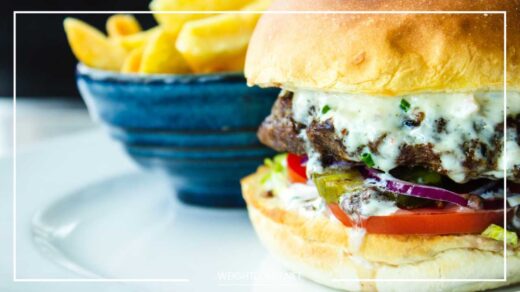What is the Best Way to Lose Weight

Lose Weight
Shedding the Pounds: A Comprehensive Guide to Sustainable Weight Loss
The human desire for a healthier, slimmer physique has existed for millennia. Countless weight loss solutions have emerged throughout history, from ancient herbal concoctions to modern fad diets.
Yet, with conflicting information bombarding us from all sides, navigating the path to sustainable weight loss can feel overwhelming. What truly is the best way to shed pounds and keep them off?
The reality is, there’s no magic potion or one-size-fits-all solution. Sustainable weight loss is about creating a healthy lifestyle you can maintain for the long haul, not a quick fix.
This comprehensive guide will delve into the core principles of healthy weight loss, debunk common myths, and equip you with practical strategies to achieve your goals.
Understanding the Science of Weight Loss: Calories and Energy Balance
At its core, weight loss boils down to energy balance. Your body constantly burns calories throughout the day to fuel its various functions. If you consume more calories than you burn (a calorie surplus), you gain weight. Conversely, a calorie deficit – burning more calories than you consume – leads to weight loss.
Several factors influence how many calories your body burns:
- Basal Metabolic Rate (BMR): This is the energy your body expends at rest for basic functions like breathing and circulation. BMR is influenced by factors like age, sex, muscle mass, and genetics.
- Physical Activity: Exercise burns calories, with more intense workouts leading to a greater calorie burn. Building muscle mass also increases your BMR, even at rest.
- Thermic Effect of Food (TEF): The energy your body uses to digest and absorb food. Protein has a higher TEF compared to carbohydrates and fats.
Dismantling Weight Loss Myths: Separating Fact from Fiction
Crash diets, fad cleanses, and other quick-fix solutions often promise rapid weight loss. While you might see some initial results, these methods are not sustainable and can be detrimental to your health. Let’s debunk some common weight loss myths:
- Myth: Restrictive Diets Are the Key: Severely restricting calorie intake can lead to nutrient deficiencies, muscle loss, and a slowed metabolism. Aim for a balanced diet that keeps you feeling full and energized.
- Myth: Carbs Are the Enemy: Carbs are an essential source of energy for the body. Focus on complex carbs like whole grains, fruits, and vegetables instead of refined carbs like white bread and sugary drinks.
- Myth: Exercise Isn’t Necessary: While diet plays a crucial role, exercise is vital for building muscle, boosting metabolism, and improving overall health and well-being.
- Myth: Spot Reduction Is Possible: You can’t target fat loss to specific areas. Exercise combined with a healthy diet leads to overall weight loss and a more sculpted physique.
Building a Sustainable Weight Loss Plan: A Multifaceted Approach
Now, let’s get practical! Here’s a breakdown of key elements to create a weight loss plan that works for you in the long term:
1. Setting SMART Goals for Success:
SMART goals are specific, measurable, attainable, relevant, and time-bound. They provide a clear roadmap for your weight loss journey.
- Specific: Define your desired weight loss amount and timeframe. Instead of saying “I want to lose weight,” set a goal like “I want to lose 10 pounds in 3 months.”
- Measurable: Track your progress through regular weigh-ins, body measurements, or how your clothes fit.
- Attainable: Set realistic goals that you can achieve and maintain. Aim for a gradual weight loss of 1-2 pounds per week.
- Relevant: Ensure your goals align with your overall health and well-being. Consider your lifestyle and any underlying health conditions.
- Time-bound: Set deadlines to stay motivated and track progress. Break down your overall goal into smaller, achievable milestones.
2. Embracing a Balanced and Sustainable Diet:
- Focus on Whole Foods: Prioritize whole, unprocessed foods like fruits, vegetables, whole grains, lean protein sources (chicken, fish, beans), and healthy fats (avocados, nuts, seeds). These foods are packed with nutrients that keep you feeling full and energized.
- Mindful Eating: Pay attention to your body’s hunger and fullness cues. Eat slowly, savor your food, and avoid distractions while eating. This helps you recognize satiety and avoid overeating.
- Portion Control: Use measuring cups or smaller plates to manage portion sizes. This prevents you from unconsciously consuming more calories than intended.
- Limit Processed Foods: Processed foods are often high in calories, unhealthy fats, added sugars, and sodium. They can contribute to weight gain and other health problems. Opt for homemade meals or minimally processed options whenever possible. Here’s the continuation of the guide, focusing on the remaining aspects of a sustainable weight loss plan and additional tips:
- Stay Hydrated: Water is essential for overall health and can aid in weight loss. It helps curb cravings, keeps you feeling full, and can even boost metabolism. Aim to drink plenty of water throughout the day.
- Read Food Labels: Become familiar with food labels. Pay attention to serving sizes, calorie counts, and the amount of added sugars, sodium, and unhealthy fats. Choose options lower in these components.
- Plan and Prep Meals: Planning and prepping meals in advance can be a game-changer. This helps you make healthy choices and avoid unhealthy temptations, especially when busy.
- Cook More Often: Cooking meals at home allows you to control ingredients and portion sizes. Experiment with healthy recipes that are both delicious and nutritious.
- Find Healthy Alternatives: Cravings are inevitable. Instead of reaching for sugary snacks, find healthy alternatives. Fruits, yogurt with berries and granola, or a handful of nuts can satisfy your cravings without derailing your progress.
3. Finding Activities You Enjoy: Moving Your Body for Success
- Regular Exercise: Aim for at least 150 minutes of moderate-intensity exercise or 75 minutes of vigorous-intensity exercise per week as recommended by the Centers for Disease Control and Prevention (CDC). This can be broken down into smaller chunks throughout the week. Find activities you enjoy, whether it’s brisk walking, swimming, dancing, cycling, or team sports.
- Incorporate Strength Training: Building and maintaining muscle mass is crucial for weight loss. Strength training not only helps you burn calories during exercise but also boosts your metabolism, even at rest. Aim for strength training exercises that target all major muscle groups 2-3 times per week.
- Find Activities You Like: The key to consistency is enjoyment. Choose activities you find fun and engaging. You’re more likely to stick with an exercise routine if you actually look forward to it. Consider joining a fitness class, finding a workout buddy, or exploring outdoor activities like hiking or biking.
4. Prioritizing Sleep for Optimal Health
- Aim for 7-8 Hours: Adequate sleep is essential for weight loss and overall health. When you’re sleep-deprived, your body produces more ghrelin (the hunger hormone) and less leptin (the satiety hormone), leading to increased hunger and cravings. Aim for 7-8 hours of quality sleep each night.
- Develop a Relaxing Bedtime Routine: Establish a relaxing bedtime routine to wind down before sleep. This could include taking a warm bath, reading a book, or practicing relaxation techniques like deep breathing or meditation. Avoid screen time (phones, laptops, TVs) for at least an hour before bed as the blue light emitted can disrupt sleep patterns.
5. Managing Stress: Keeping Your Mind and Body Aligned
- Chronic stress can lead to weight gain. Stress hormones like cortisol can increase appetite and cravings for unhealthy foods. Find healthy ways to manage stress, such as yoga, meditation, spending time in nature, or listening to calming music.
- Practice Relaxation Techniques: Deep breathing exercises, mindfulness meditation, and progressive muscle relaxation can all help to reduce stress and promote better sleep.
6. Seeking Support: Building Your Weight Loss Team
- Tell your friends and family about your goals. Sharing your goals with loved ones can increase accountability and provide much-needed encouragement. Their support system can be invaluable on your journey.
- Consider a Registered Dietitian (RD) or Certified Personal Trainer (CPT): An RD can create a personalized meal plan that meets your individual needs and preferences. A CPT can help you develop a safe and effective exercise program based on your fitness level and goals.
Remember: Weight loss is a journey, not a destination. There will be setbacks along the way. The key is to be patient with yourself, celebrate your successes, no matter how small, and recommit to your goals when needed. Forgive yourself for occasional slip-ups and get back on track with the next meal or workout.
Additional Tips for Long-Term Success:
- Find a Weight Loss Community: Joining online forums or support groups can connect you with others on a similar journey. Sharing experiences and offering encouragement can be incredibly motivating.
- Reward Yourself: Celebrate your milestones with non-food rewards. This could be a new outfit, a relaxing massage, or a weekend getaway.
- Focus on Non-Scale Victories: Don’t just focus on the number on the scale. Celebrate non-scale victories like increased energy levels, better sleep, or improved clothing fit.
- Make Gradual Lifestyle Changes: Aim for sustainable lifestyle changes rather than drastic possible. Here’s the concluding part of the guide, focusing on mindful eating practices and the importance of sustainability:
-
Mindful Eating Practices:
- Eat Slowly and Savor Your Food: Put down your phone and other distractions while eating. Focus on the taste, texture, and aroma of your food. Chewing thoroughly allows your body to register satiety signals, preventing overeating.
- Practice Gratitude: Take a moment before each meal to express gratitude for the food you have. This simple act can enhance your enjoyment of the meal and promote mindful eating.
-
Sustainability is Key:
- Focus on Progress, Not Perfection: There will be days when you veer off track. Don’t let setbacks derail your entire journey. Forgive yourself, learn from the experience, and recommit to your goals.
- Find Balance: Aim for a healthy lifestyle that you can maintain in the long term. Restrictive diets and excessive exercise are not sustainable. Find a healthy balance that allows you to enjoy life without feeling deprived.
- Make Lifestyle Changes, Not Crash Diets: Crash diets are a recipe for yo-yo dieting and can be detrimental to your health. Focus on making gradual, sustainable changes to your diet and exercise routine that you can stick with for life.
- Listen to Your Body: Pay attention to your body’s hunger and fullness cues. Eat when you’re hungry and stop when you’re comfortably full. Don’t force yourself to finish everything on your plate.
Final Word:
Shedding pounds and achieving a healthier lifestyle is a marathon, not a sprint. By embracing the principles outlined in this guide, you can develop a sustainable weight loss plan that works for you.
Remember, the most important factor is to find a healthy approach that you can enjoy and maintain over time. This will not only help you reach your weight loss goals but also empower you to live a healthier, happier life.
Disclaimer: This guide is intended for informational purposes only and does not constitute medical advice. Always consult with a healthcare professional before starting any new diet or exercise program, especially if you have any underlying health conditions.
I hope this comprehensive guide empowers you on your weight loss journey!


















Losing weight is 80% diet and 20% exercise, there’s no point in doing hours and hours of cardio and weight training if you’re still eating junk food, because you will not lose any weight, sure you may get fitter but you won’t lose any fat.
Also, if you can’t fit 30 minutes of cardio in a day, 7 minutes will do the trick tremendously, well that’s only if you’re doing 7 minutes of HIIT (High Intensity).
Do at least a 20 second sprint then a 20 second run, alternate for 7 minutes, everyday, you will feel great and revitalized after.
Be careful in which guides you follow, there are TONS of fad diets and lies. Here’s a great weight loss program I used to lose weight and permanently keep it off: http://thehealthspecialists.com